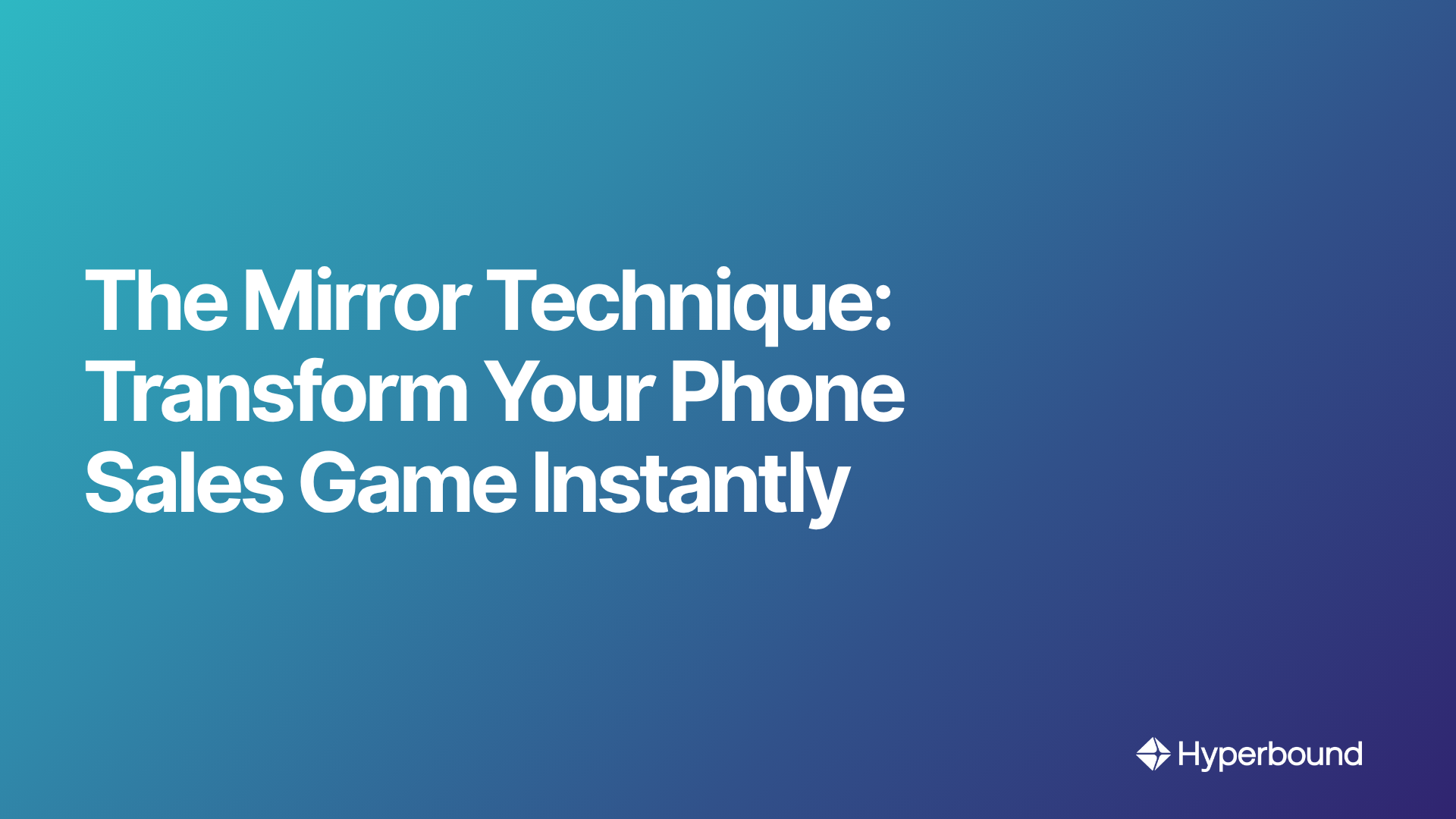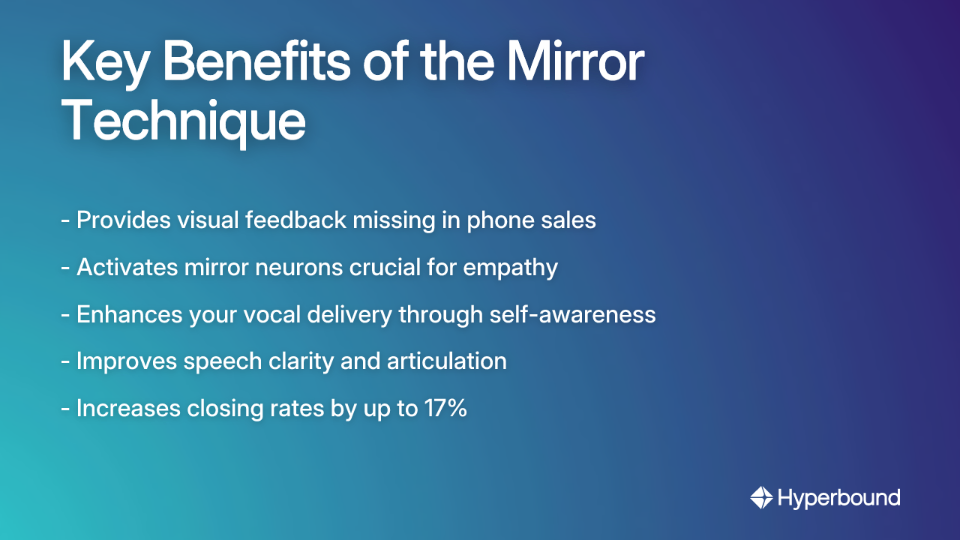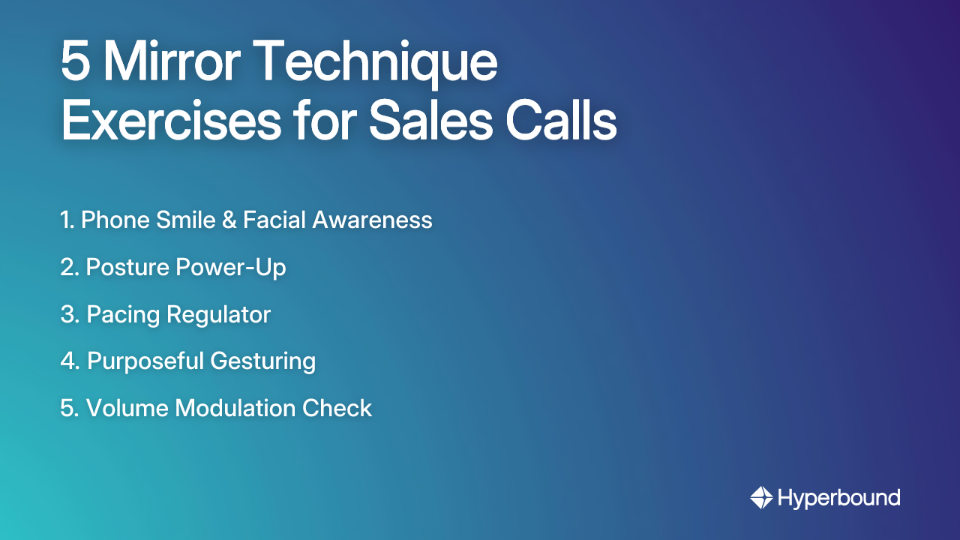
You've set up your sales call perfectly. Your script is solid. You know your product inside and out. But when you dial that number, something changes. Your voice becomes too matter-of-fact. You rush through your pitch at lightning speed. You find yourself practically "trying to sleep with them on the first date," as one salesperson put it – pushing too hard, too fast for that connection.
And then comes the dreaded silence or objection on the other end of the line.
If you're working in phone sales, you're fighting with one hand tied behind your back. In a world where 93% of communication effectiveness comes from nonverbal cues, you're limited to just your voice – a single instrument that must do the work of an entire orchestra.
The Invisible Barrier in Phone Sales
In remote or phone-based sales environments, you lose over half of your communication toolkit: body language. Your tonality has to do all the heavy lifting. This creates an invisible barrier to genuine connection and rapport.
"I have a habit of talking way too fast and getting overly excited to the point it can sound like gibberish," admits one sales professional. Others struggle with volume control: "Sometimes I am just too loud and I realize that later."
But what if there was an elegantly simple solution hiding in plain sight?
The Mirror Technique: Your Secret Weapon
The answer might be as simple as this user suggestion: "Put a mirror in front of you when you are making phone calls."
This deceptively powerful strategy provides the crucial visual feedback loop missing in phone sales. It's particularly valuable for those working from home who feel isolated from the normal feedback channels of an office environment.
One remote salesperson's reaction? "Damn, as someone who works out of their home during office time, that's a great idea."
The Psychology of Seeing Yourself: Why a Mirror Builds Rapport
The Mirror Technique works because it leverages deep psychological principles that govern human communication.

Mirroring as a Rapport-Building Strategy
In traditional sales, mirroring refers to subtly matching a prospect's behavioral characteristics to foster trust. According to HubSpot, this technique activates "mirror neurons" in the brain, which are crucial for empathy and understanding.
The Mirror Technique puts a twist on this concept. Instead of mirroring your prospect (whom you can't see), you're observing and optimizing your own body language to enhance how you sound to them.
Hard Data on Mirroring's Impact
The science is compelling:
- A study in the Journal of Experimental Social Psychology found that MBA students who mirrored their negotiation partners achieved successful agreements 67% of the time, compared to just 12% for those who didn't.
- A Harvard Business Review study noted a 17% higher closing rate for retail sales professionals who used mirroring techniques.
This matters because the 2024 State of Sales Trends report highlights that 82% of sales professionals believe connecting with people is the most vital part of their job.
How Visual Cues Create Auditory Clarity
The brain is wired to integrate visual and auditory information. This concept of audiovisual benefits explains why seeing your own expressions enhances your speech.
Research published in PMC NCBI found that dynamic visual information (like seeing your mouth move) significantly improves speech perception. At intermediate signal-to-noise ratios, participants showed a 20% improvement in word recognition when visual cues were present.
What does this mean for your sales calls? Even if the phone connection has static or your prospect is distracted, seeing yourself articulate clearly helps you project a clearer, more understandable voice, cutting through the noise and preventing the dreaded "unclear speech" that "negatively impacts social interactions."
Your Station: A Practical Setup Guide for Home-Based Sales
Setting up your mirror-enhanced workspace is simple but strategic:

Step 1: Choose Your Mirror
Select a mirror large enough to see your face and upper body clearly. A desktop mirror or small wall-mounted option works well.
Step 2: Optimal Positioning
Place the mirror at eye level in your workspace, where you can glance at it naturally during calls without breaking your flow. Position it behind or beside your computer screen for easy reference.
Step 3: Optimize Lighting
Ensure your workspace is well-lit from the front, not behind you. You need to see your expressions clearly to get the full benefit of the technique.
Step 4: Dress for Success
Even when remote, dress professionally. Seeing a professional in the mirror reinforces a confident, business-like mindset, which translates directly into your voice and persuasiveness.
Mastering the Mirror: 5 Exercises to Instantly Transform Your Tonality
These targeted exercises will help you leverage your mirror for maximum impact:

1. The "Phone Smile" and Facial Awareness Drill
How: While on the phone, practice maintaining a genuine smile and open facial expressions. Use the mirror to check yourself regularly throughout the call.
Why: A smile physically alters your vocal tone, making it warmer and more approachable. Studies show that listeners can hear a smile in your voice, even when they can't see you. This combats that "too matter of fact" delivery and helps establish emotional cues that build rapport.
2. The Posture Power-Up
How: Sit up straight or, even better, stand during important calls. Use the mirror to monitor for slouching or closed body positions.
Why: Good posture opens your diaphragm, allowing for better breath support and voice projection. This creates a voice that projects confidence and authority, preventing you from sounding like you're "seeking approval" from the prospect.
3. The Pacing Regulator
How: For those who talk "way too fast and get overly excited," use the mirror to watch your mouth movements and consciously slow down. As one sales professional suggests, "tap out a slow beat with your foot or hand" to create a physical rhythm for a calmer pace.
Why: A controlled pace (around 150 words per minute) improves articulation and ensures the prospect can follow you, making you more persuasive on calls. The mirror helps you catch yourself when excitement causes you to speed up.
4. Purposeful Gesturing
How: Use hand gestures as you naturally would in a face-to-face conversation. Watch yourself in the mirror to ensure they look energetic, not frantic.
Why: The energy from physical gestures translates directly into vocal inflection and enthusiasm, preventing a monotone delivery. This also reduces the use of filler words that signal a "lack of preparation" or confidence.
5. Volume Modulation Check
How: For those who are "sometimes just too loud," use the mirror to spot the physical signs of shouting (strained neck, tense jaw). Practice speaking from your diaphragm for a powerful but controlled volume.
Why: A controlled volume is respectful and pleasant to listen to, preventing listener fatigue and keeping them engaged with your pitch.
Practical Implementation: Your 7-Day Mirror Technique Rollout
Here's a structured plan to integrate the Mirror Technique into your sales routine:
Day 1-2: Setup & Passive Observation
Set up your mirror. Make calls as usual but simply observe your default habits. What is your resting face? Do you slouch? Notice without judgment.
Day 3-4: Active Focus
Dedicate each day to one exercise. On Day 3, focus only on posture. On Day 4, focus only on smiling and facial expressions.
Day 5: Role-Playing
Pair up with a colleague for a mock sales call and get feedback on how you sound. For more scalable practice, AI-powered tools like Hyperbound's AI Sales Roleplays let you rehearse with realistic AI buyers on your own schedule.
Day 6: Record & Review
Record the audio of your calls. Listen back while recalling what you saw in the mirror. To accelerate this process, Hyperbound's AI Real Call Scoring can analyze your calls for you, providing objective scores and highlighting key moments to connect your actions with outcomes.
Day 7: Full Integration
Consciously try to bring all the elements together during your live calls. By now, it should start to feel more natural.
Common Pitfalls to Avoid
- Becoming Self-Conscious: The mirror is a tool, not an audience. Glance at it periodically, don't stare constantly.
- Sounding Inauthentic: The goal isn't to become a robotic actor. Authenticity is crucial. Use the mirror to become a more aware and engaging version of yourself, not to fake a persona. Remember to "loosen up a bit. They're still human beings."
- Forgetting to Listen: Don't get so absorbed in your own reflection that you forget to actively listen to the prospect's needs and emotional cues.
Conclusion: See the Difference, Hear the Results
The Mirror Technique is more than a simple trick; it's a powerful tool for self-coaching and personal development. It bridges the gap created by non-visual communication, giving you back the crucial nonverbal feedback you've been missing in phone sales. While a mirror helps perfect your visual delivery, AI coaching tools like Hyperbound can complete the picture by analyzing what you say and how you say it, providing objective feedback on your talk tracks and tone.
It helps you master your tonality, pace, volume, and pitch, allowing you to build rapport faster, project confidence, and articulate your message with clarity – all while eliminating distracting filler words.
You're a salesperson struggling with limited resources and looking for personal development. Here is a free, effective tool you can implement immediately. Set up a mirror in your workspace today. See the difference in your body language, and you will hear the difference in your results.

Frequently Asked Questions
What is the Mirror Technique in phone sales?
The Mirror Technique is the practice of placing a mirror in front of you during sales calls to observe and improve your own body language, facial expressions, and posture. Unlike traditional mirroring where you match a prospect's behavior, this technique provides crucial visual feedback that is normally lost in phone-based sales. By seeing yourself, you can consciously adjust your nonverbal cues (like smiling or sitting up straight) which directly enhances your vocal tonality, making you sound more engaging and confident.
Why does using a mirror help improve sales call performance?
Using a mirror improves sales call performance because it forces you to be aware of your nonverbal cues, which directly impact your vocal tone, clarity, and pacing. The brain links visual information to auditory output. When you see yourself smiling, your voice naturally becomes warmer. When you see yourself sitting up straight, your voice projects more confidence. This self-awareness helps you regulate your speed, project authority, and build rapport more effectively.
How do I set up a mirror for my sales calls?
To set up a mirror for sales calls, place a small desktop or wall-mounted mirror at eye level where you can see it naturally without straining. Position it beside or behind your computer monitor and ensure your face is well-lit from the front. The goal is to be able to glance at it periodically for feedback, not stare at it continuously.
Can the Mirror Technique help if I talk too fast or sound monotone?
Yes, the Mirror Technique is highly effective for controlling your speaking pace and improving vocal variety. If you talk too fast, watching your mouth movements in the mirror provides a visual cue to consciously slow down. If you sound monotone, you can practice using more energetic facial expressions and purposeful hand gestures, as the energy from these physical actions translates directly into a more dynamic vocal delivery.
How long does it take to see results with the Mirror Technique?
You can start seeing and hearing results almost immediately, though it typically takes about a week of consistent practice for the technique to feel natural. Following a structured plan, like the 7-day rollout described in the article, helps build the habit and integrate it seamlessly into your routine, leading to improved call outcomes as your tonality and confidence grow.
What are the biggest mistakes to avoid when using a mirror for sales calls?
The three biggest mistakes to avoid are becoming overly self-conscious, sounding inauthentic or rehearsed, and forgetting to actively listen to your prospect. The mirror is a tool for self-coaching, not a performance. Use it for quick glances, enhance your natural communication style, and never let it distract you from focusing on the customer's needs.
Is there any scientific proof that mirroring works in sales?
Yes, multiple studies confirm the effectiveness of mirroring techniques in building rapport and achieving better outcomes. For instance, research has shown that mirroring can lead to successful agreements 67% of the time in negotiations. This technique adapts the concept for phone sales but leverages the same powerful psychological principles of empathy and connection that are proven to be vital for sales success.
Book a demo with Hyperbound
.png)













